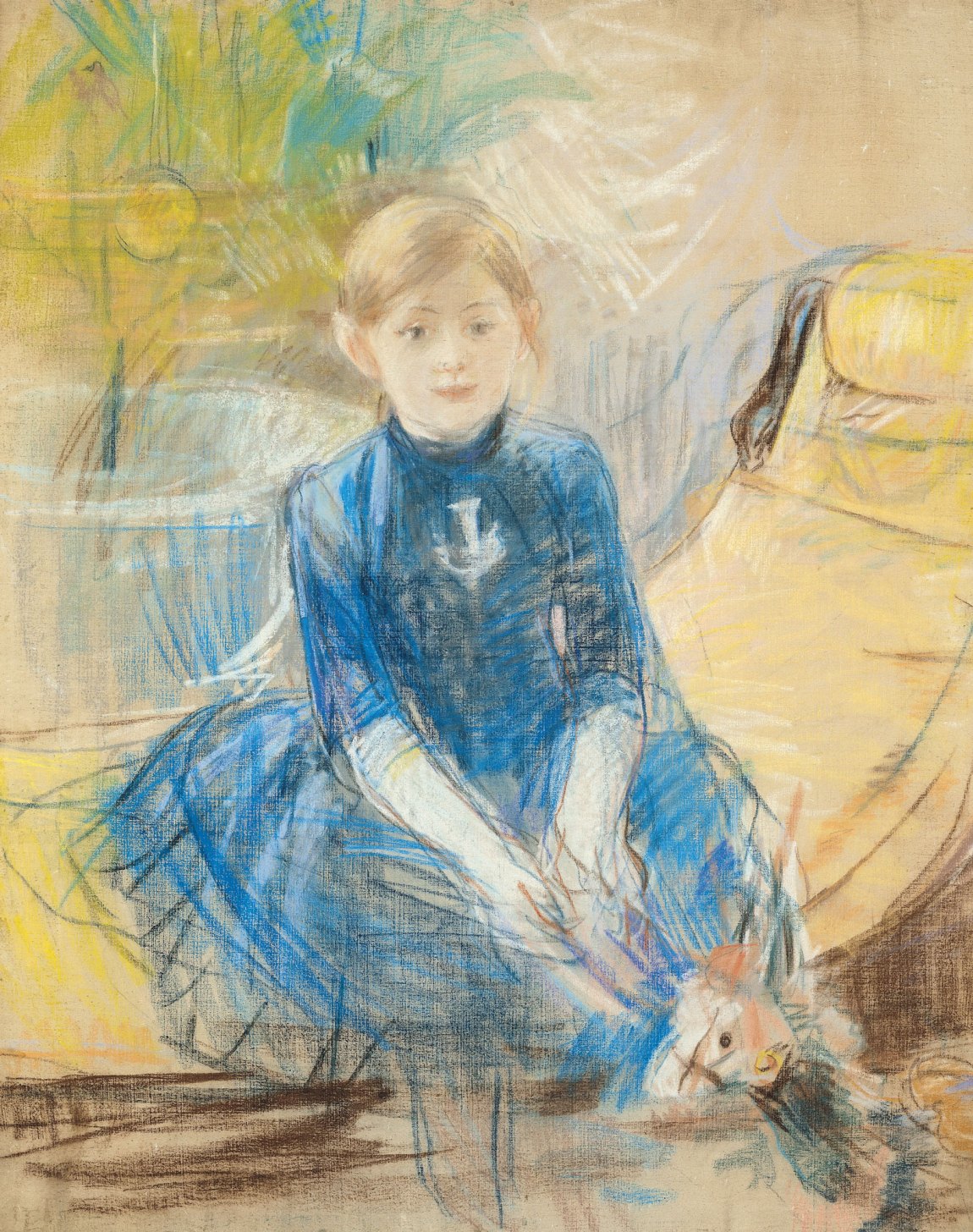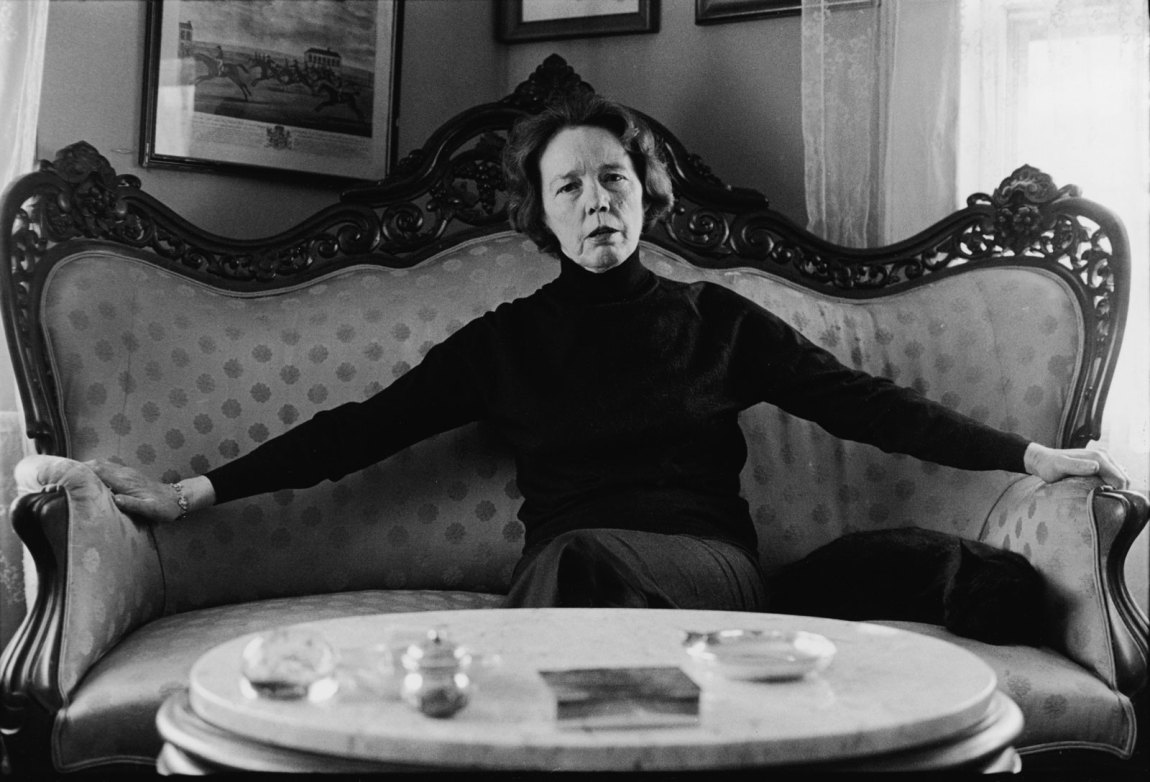In a 1941 letter to a friend, Jean Stafford wrote:
Proust outstrips everyone. He wears me out physically. His intensity demands complementary energy which in me is limited, but I know of no intellectual exercise so rewarding as reading him carefully…. That is, no exercise performed with another novelist unless it is James who in a way is better.
This isn’t idle chitchat but a statement of purpose. Though only twenty-five, Stafford had already written one novel, never published. Undeterred, she meant not only to write another but to do so in the footsteps of the modern form’s most revered progenitors.
Influence is important; art is a continuum. But explicit intention usually results in an unhappy muddle. And Proust and James of all people—two writers with distinctly don’t try this at home sensibilities. Stafford pulled it off. She published Boston Adventure in 1944. The novel’s interest in how the self is forged in childhood is indebted to Proust; its desire to look closely at people, through some combination of psychology and anthropology, seems learned from James. The twenty-nine-year-old had a hit: the book sold more than two hundred thousand copies, enough to bankroll the purchase of a house. (The details I’m citing here, including the correspondence above, are from Ann Hulbert’s superb biography, The Interior Castle.)
First novels should all be graded on a curve. Stafford’s desire to match Proust in demanding something of her readers feels like youthful bluster; her mature work (particularly the short stories) are evidence of an artist finding her own way forward. Fashions move unpredictably, and even a decade’s distance can render a bestseller hollow, or puzzling. But Boston Adventure remains a pleasure to read. There’s a fairytale quality to the tale of triumph over unhappy childhood, a sweetness cut by the acidity of the book’s social satire.
It’s not that illuminating to say that Jean Stafford is underread, even if it’s true. Maybe this is because so many of our artists who happen to be women are spoken of in this way: as vitamins we ought to swallow. Sure, Stafford was overshadowed by her first husband, the poet Robert Lowell; undoubtedly, lifelong struggles with her health (particularly alcoholism, central in her heartbreaking story “Children Are Bored on Sunday”) were detrimental to her productivity. But her later novels—1947’s The Mountain Lion and 1952’s The Catherine Wheel—have their fans (and merits!), and a writer whose Collected Stories won the Pulitzer Prize can’t persuasively be called overlooked.
If Stafford’s debut is said to be underread, this might have something to do with the author’s stated intentions: the book’s Proustian heft and preoccupation with psychology, its Jamesian interest in the Boston Brahmin. The whole enterprise is stubbornly old-fashioned, but that’s the very thing I love about it. The book takes its time, looks deeply at its characters, and is as devoted to story as a soap opera. It is easy to surrender to.
Sonie Marburg, the novel’s heroine and narrator, lives a mean little life—“we were very poor” are the first words she offers us. Her mother, Shura, Russian by birth, has been disappointed by everything. “How great had been her hopes the day she left Moscow! Her fellow waitresses, clinging to her, sobbing with envy, had sworn that she would be rich.” Instead her marriage to a German shoemaker, and their emigration to the United States, finds her . . . disappointed. “Ah, Hermann Marburg, I hate you from the bottom of my soul!”
From a room inside the hotel where her mother works as a chambermaid, Sonie can sometimes glimpse salvation: “I could see Boston and its State House dome, gleaming like a golden blister.” She has a particular attachment to a regular at the hotel, Miss Lucy Pride (as we soon see, the young Stafford is not especially subtle with character names), who is everything her parents are not: sophisticated, measured, and if not kind, at least aware of Sonie’s existence.
To be small is to be stuck. Boston (and adulthood, and liberty) looms—the book’s working title was The Outskirts—but might as well be the moon. The first section of the book is named not for the dreary fictional village of Chichester, where it is set, but for the Hotel Barstow itself. That’s where Sonie truly prepares for life, playing understudy to her mother, too ill to work. The Barstow is a seasonal operation; it’s as though Sonie isn’t even a person most of the year.
I’m usually bored by children in fiction that is written for adults. I think writers forget, over time, how we thought when we were young and struggle to fix in words the illogic of childhood. Novels for adults reach for either the sentimental or the surreal, quite in contrast to how the best writers for children—Louise Fitzhugh, Beverly Cleary, Judy Blume—reflect back to their readers something essential about the reality in which they find themselves.
Advertisement
Stafford is able to both observe Sonie and enter her; she’s speaking from the remove of adulthood but remembers the quicksilver state of the young mind:
At night, bound by the narrow walls of our kitchen, I was not always absorbed in my book about girls at boarding school whose clever mothers had sewed for months before their departure, making silk dresses and dark wool jumpers, warm wrappers, innumerable muslin guimpes, had crocheted fascinators and had bought blue merino stockings. Although I envied the fortunate creatures, my own life which I plotted in a variety of patterns was richer. My hair became blond; my name was Antoinette de la Mar.
Proust demanded and rewarded Stafford’s attention; a tough act to follow. Sometimes, her Proustian digressions come off as labored, but occasionally there’s a glimmer of genius. These days, Stafford’s submergence into psyche is so démodé as to feel refreshing, a contrast to what often seems the default obliqueness of the contemporary novel. So much fiction today takes on faith that people are inexplicable; it’s bracing to be with a writer determined to try to explain them.
The novel’s first section grows stranger and more fevered than its opening pages suggest; Shura is not histrionic but truly mad. Manic, she breaks into the Barstow, shuttered for the winter, to clean the sand out of its woven chairs. It’s one of the best scenes in the book, because we watch a psychic break with a child’s horror instead of through the comfortable distance of diagnostic language. I won’t spoil what befalls Sonie’s little brother, and you probably wouldn’t believe me if I did.
Sonie is transported from Chichester to Boston—to Miss Pride’s Pinckney Street mansion, the very place she’s long dreamed of—as we know she must be, since it’s the explicit promise of the novel from its first page. It’s impressive plotting by Stafford, confident enough to know that readers will mostly go wherever she leads them.
Stafford’s talents align with her ambitions more tidily in the latter half of the novel, where she moves on to channeling James. She does him one better, I think; rather than wry or ironic or suggestive, Stafford can come out with it and be funny.
Sonie observes: “I had noticed, from the beginning, that Miss Pride was extremely frugal of her laughter.” Sonie overhears party chatter: “She has two spurious Watteaus which are so charming one doesn’t mind their being frauds.” Sonie reports and we decide. Here’s Miss Pride again:
When I was your age, I deplored race prejudice. To my dear, single-minded Papa’s chagrin, I used to seek out your Israels and Rachels, the bigger the nose the better. But at last I admitted to myself that I was just like everyone else. I didn’t get on with them…their aggressiveness distressed me in public and their money mania at last got the better of my idealism. Now, while I say “live and let live” I must confess I sympathize with that particular of Hitler’s program.
Stafford is unafraid to make light of the truly horrific. She’s willing to look at Lucy Pride directly.
The second act shows the first to be preamble, and overlong, though I don’t especially mind that. It’s just that Stafford is good when she’s spinning story, to which the latter half of the book gives itself entirely. It’s Wharton, it’s James, it’s soap opera: appointments and assignations, secrets and surprises. Such is my affection for Boston Adventure that I’m fond even of its most leaden gestures, like the fact that Miss Pride has a cat locked up in her private room at home, an animal she refuses to show to Sonie. The cat’s name? Mercy. I’ve not even mentioned that Pride’s niece is called Hopestill.
This can all be forgiven. Stafford is aiming for Proust because she knows how lovely it can be to be in his company. She’s attentive to what language can accomplish: a teacher has the smell of “yeast, sachet, and a slight mildew.” We recognize what she shows us, as when Sonie meets her newborn brother: “I longed to hold him myself and to kiss his bawling, cockled face, and to bestow upon him all the tender services that were the right of anything so supremely helpless.” And she can be wicked, as in this observation of Miss Pride’s: “Bending over as if to inspect the plate of lemon slices, she said in a much lower voice, ‘I think you should be more sparing of lip rouge.’”
Advertisement
Stafford is persuasively imitative but that’s not the reason to read this book now. I’m talking about simple pleasure, and sometimes that’s all I ask of a novel. If I tell you Boston Adventure is a diversion, I know how rare that is. The novel of ideas is spoken of as distinct from the novel that entertains. What if one book attempted both? Sonie gets to the title city but does Sonie save herself? Late in the book, she tells us of the panic that settles over her in an empty house: “It was a fear I could describe only approximately as a fear of myself.” With her slender body of work, Stafford is one of those writers I wish had left us more. But that work itself is more than enough.




